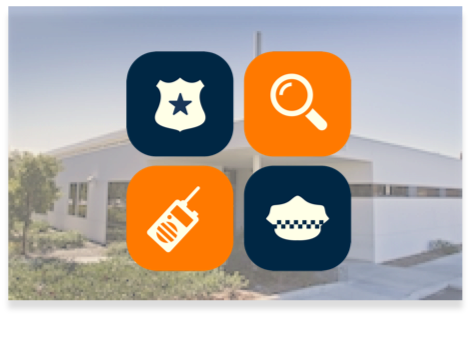Disaster Preparedness
Active Shooter
What to do?
If there is a threat and you can escape:
1) Move away from the threat as quickly as possible.
2) Run if you're able.
If the threat is near you and you can't escape:
1) Find a secure room and lock the door.
2) Put any big object in front of the door to prevent entry.
3) Turn off lights and silence all electronic devices.
4) Hide behind furniture and be as quiet as possible.
5) Wait for CSUF PD to release you from your position.
If you can't (safely) lock the door or escape:
1) Hide and be prepared to disarm the threat.
2) Two to five person (attack team) should be just inside the door to knock down the weapon and push the shooter to the floor and disarm.
3) Do everything you can to survive until CSUF PD arrives. When police enter the room show your hands and follow instructions.
California State University Active Shooter Video
-English![]()
-Spanish![]()
Click to take a 45-minute online FEMA course on active shooter situations![]()
Earthquake
Key things to remember:
1) Prepare now for an earthquake by securing items in your home that could fall and injure you.
2) Make a plan for what you will do when an earthquake occurs. Where to go? Who to call?
3) Have supplies (food, water, cell phone charger, first aid kit, etc.) in your car and home.
Red Cross Checklist (English)
![]() Red Cross Checklist (Spanish)
Red Cross Checklist (Spanish)![]()
4) Secure your finances. Keep extra cash in a safe place, take photos of important documents and contacts.
5) When an earthquake occurs: DROP OR LOCK (if using a wheelchair), COVER and HOLD ON! Wait until the shaking stops and then evaluate your situation.
Click for the Drop, Cover and Hold On video![]()
-
If you are ordered to evacuate, follow instructions from authorities.
-
If you are unsure if you should evacuate, wait for the shaking to stop and then carefully leave the building and move at least 50 feet away.
-
Never run while the building is shaking – that’s how serious injury can occur.
-
Minor earthquakes should not prompt you to evacuate. In fact, unless there is another reason to leave the building, you are safer inside than outside after an earthquake.
CSUF Evacuation Areas![]()
![]()
Titan Hall & ASC Evacuation Map![]()
![]()
Earthquake Warning California![]()
Fire
EVACUATE WHEN INSTRUCTED TO DO SO!
- If there is soot/ash in your area from local fires, close off all air from under the doors or any location where air could seep into the room.
- Tune in to your local news sources for regular updates.
- Be ready to leave at a moments notice.
- Know your evacuation routes.
- Develop an emergency plan with your family.
Do you know how to use a fire extinguisher? If not, watch this video. Learn How
Flooding and Rain
- Move to an elevated and safe location.
- Tune in to NOAA Weather Radio All Hazards, local radio or television broadcasts.
- Do not walk, swim or drive through flood waters. Turn Around, Don't Drown!
- Stay off bridges located over fast-moving water.
Misc.
Hazmat Spill: Go indoors and close all windows and doors.
Soot/Ash from Fire and Chemical Spills: Close off all air from under doors or any place where air could seep into the room.
Power Outage
-
Keep freezers and refrigerators closed.
-
Only use generators outdoors and away from windows.
-
Do not use gas stoves to heat your home.
-
Disconnect appliances and electronics to avoid damage from electrical surges.
Tip: Evacuate when instructed to do so!

